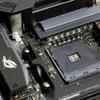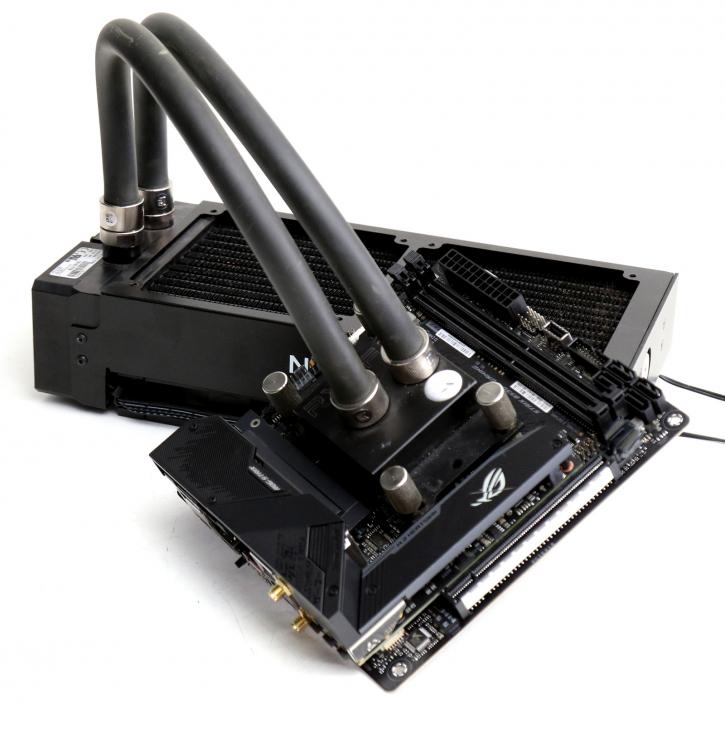Final Words & Conclusion
Conclusion
Mini ITX is sexy and you know it, the ROG STRIX B550-I Gaming certainly is an appealing looking product. I wrote this earlier in another review, but I am still fighting the idea that B550 is the budget series, but realistically if it shaves off a few coins in pricing, B550 really offers everything you need. Now I write this specifically as I went into this review 'blind' on pricing, meaning I had no clue what this board MSRP would be. With the current trends and Aorus Master pricing, I really expected this to be a motherboard in the 250 USD range, I mean I would not have been surprised about that. But much to my surprise, this motherboard is priced quite fair at 209 USD and roughly 229 EUR.
DDR4 Memory
Memory compatibility should not and likely will not be an issue as long as you stick to recently released DIMMs. I'll keep repeating this, but there are some really good Ryzen optimized kits out there. With Ryzen Generation 3 you can go higher in DDR4 clock frequency if you want to. We advise that up-to 3600 MHz, CL16 is fine, after that frequency value a 2:1 divider kicks in, and that can have an effect on the Infinity Fabric bandwidth, inter-core CCX bandwidth. We see no reason for faster DDR4 memory anyways, it's expensive and does not bring in added perf, much like what you see on Intel platforms as well.
Power consumption
With Ryzen 3000 processors now fabbed at 7nm, you may see some interesting energy efficiency. now we used a 12 core 3900X on B550 which is a little excessive I agree. The load values are excellent. The 3900X on B550 did show 60 Watts idle load, ergo read my previous statement on the motherboard. The load values with 12 cores stressed topped 215 Watts (entire PC). So yeah, it's all good there.
Performance & tweaking
Your motherboard will not be a restriction for tweaking and overclocking, the processors and ASIC quality alongside cooling these days are the more important factor. The original Ryzen series from 2017 revealed clocks in the 3900~4000 MHz range on all cores. For Ryzen 2000 / Zen+ that was a notch higher. Ryzen 3000 seems to take an all-core clock of 4300~4400 MHz at best. Ryzen 7 3700X was able to reach a stable 4400 MHz, but that was on proper liquid cooling and really absolutely the maximum. If you tweak to the maximum, likely 1.425v~1.450v is needed for a stable 4.3 GHz on all cores. The thing is, and I have been thinking about this for a long time, I would not recommend overclocking and tweaking. These processors by themselves can boost 1 or 2 cores to 4500, 4600, and, on the 16-core part, even 4.7 GHz. So while the rest of the cores will be binned slower, that's where you get your extra game performance. The positives of an all-core 4400 Mhz would not outweigh the positives of the default high Turbo clocks. It is something to think about for sure. At least you can try and see what works best for you. But the binned clock recipe that AMD has applied to the processors at default likely will work out the best in most scenarios, including power consumption. This is going to be a generic and general consensus for all many-core processors really.
Final words
I really do like Mini ITX, as I always find it fascinating to see how much high-performance gear motherboard manufacturers can cram into such little real estate. And yeah, with PCIe 4.0 on Graphics and one M2 slot and overclocking ability dare I say it who needs X570? That said, pricing is the trivial point here as ASUS overloaded this motherboard with premium features, but 209 USD / 219 EUR absolutely is a lot of money with anything based on the B series chipset. That being said, I am not disappointed by this product. Dual M2 slots, WIFI6, and 2.5 GigE are some of the premium features. Then there's the single M2 shield and of course, the sheer performance as B550 on that processor and feature level runs as fast as the more expensive X570 boards. The 17x17cm board also allows for four SATA3 drivers. So yeah, your bases are covers, (and all you base are belong to us). Performance among X570 and B550 is simply put the same with minor differences here and there. You can argue the lack of PCIe slots on Mini ITX of course. If you're in the market for a compact yet strong build that can even house many-core processors, you should put the ROG STRIX B550-I Gaming definitely on your short-list. That said, there are brands out there that offer the very same in features for roughly 50 bucks less, hey I'm just stating the obvious.
Handy related downloads:
- Sign up to receive a notification when we publish a new article
- Or go back to Guru3D's front page


